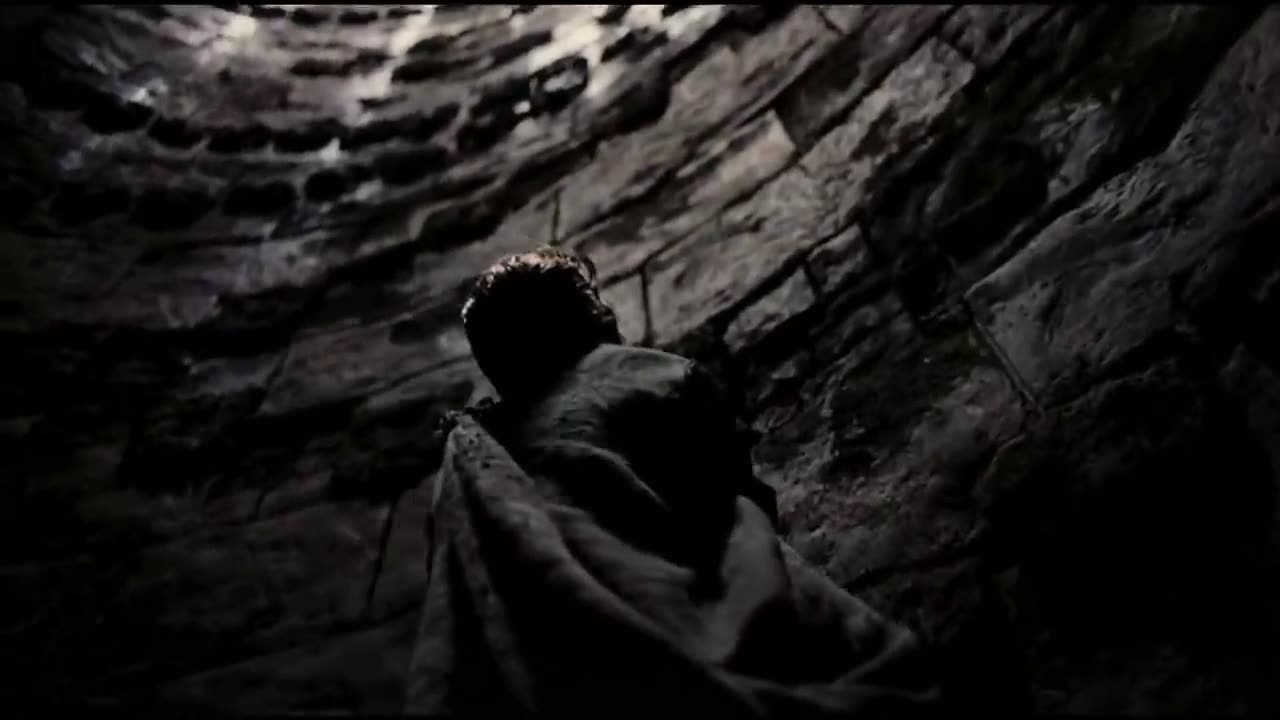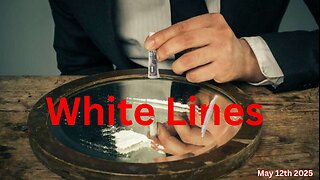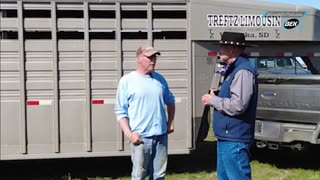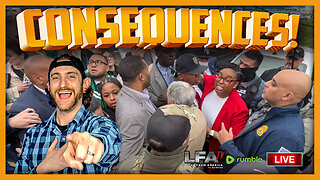Premium Only Content

Red House All Along The Watchtower Jimi Hendrix
Red House Album: Are You Experienced? (1967)
All Along The Watchtower Album: Electric Ladyland (1968)
by Jimi Hendrix
Running about 13 minutes depending on the rendition, "Red House" is a scorching blues number where Hendrix sings about returning home to see his girl, who lives in a red house. When he gets there, his key won't work, and he realizes she doesn't live there anymore. Instead of wallowing in his misery, he turns back and decides to pay a visit to her sister.
According to the book Hendrix: Setting the Record Straight, Jimi worked up Red House in New York City when he was still a struggling musician. He was staying in a friend's apartment that was decorated almost completely red, which gave him the lyrical inspiration for this song.
There have been lots of rumors about the origin. These are the most pervasive:
1) One of his girlfriends in Seattle lived in a house painted red.
2) It comes from a Hopi legend about a mysterious red city.
Red House is a very intricate song that demonstrates Hendrix' mastery on guitar. It's one that earned him the respect of many musicians, including Billy Gibbons of ZZ Top. Gibbons says he was "completely turned upside down" when he heard it.
Hendrix recorded this in a call-and-response blues style where each line is repeated twice. This style dates back to the field hollers workers would sing to pass time in the American south.
This was not included on the original US release of Are You Experienced?; the omission of Red House tweaked Hendrix, since it was one of his favorites. He often performed the song at his concerts, constantly changing the arrangement.
Hendrix recorded many versions of this song. The first release was on the UK version of his debut album, Are You Experienced? The original studio version of the song is 3 minutes, 49 seconds. Here's the timeline of the studio versions:
Version 1:
Recorded December 13, 1966, includes studio chat by Chas Chandler and Jimi, released on the original UK version of Are You Experienced? and on the 1997 30th Anniversary CD re-issue.
Version 2: This version
The same basic recording as version 1 but with a different vocal take by Jimi recorded March 29, 1967 and a different mix with more guitar echo. The studio chat introduction was mixed out, and the song released on the US version of Smash Hits in 1969, on the 1993 CD re-issue of Are You Experienced? and on The Ultimate Experience CD in 1993.
Version 3:
Recorded October 29, 1968 and introduced by Jimi as played by the Electric Church, it was released on Variations On A Theme: Red House CD in US only in 1989, released on Blues CD in 1994 and retitled "Electric Church Red House."
This song was covered on the 1997 G3 Live In Concert album, where it was performed by Hendrix acolytes Joe Satriani, Steve Vai and Eric Johnson.
This appears on the City Of Angels movie soundtrack, and was used in a scene in the movie where Meg Ryan, who plays a cardiovascular surgeon, requests a nurse to turn on Jimi while she's operating on someone.
Hendrix performed Red House at many of his famous festival appearances, including Woodstock and the Isle of Wight.
All Along The Watchtower was written and originally recorded by Bob Dylan in 1967, but it was the Jimi Hendrix cover that made the song famous. Many other artists have covered it, including Eric Clapton, Neil Young, U2, Dave Matthews Band and The Grateful Dead. Dylan was so impressed with Jimi's version that Dylan for years played it the way that Jimi had recorded it.
This was Hendrix' only Top 40 hit in the US, where his influence far outpaced his popularity. He charted a few times in the UK, where he rose to fame before making a name for himself in America.
All Along The Watchtower was recorded while Hendrix played with the Jimi Hendrix Experience: Hendrix on guitar, Noel Redding on bass, and Mitch Mitchell on drums. For this song, however, Redding was not on bass; Hendrix did it. Redding was also the guitar player for his band Fat Mattress, which Hendrix referred to as Thin Pillow. Hendrix often felt that Redding did not put his heart into the bass and was concerned that Redding concentrated more on Fat Mattress than he did on the Experience. Things like these led to him being replaced by Billy Cox.
The original version of All Along The Watchtower is very slow. Jimi Hendrix' version had a large impact on Dylan which made him make his own version "heavier."
Hendrix said: "All those people who don't like Bob Dylan's songs should read his lyrics. They are filled with the joys and sadness of life. I am as Dylan, none of us can sing normally. Sometimes, I play Dylan's songs and they are so much like me that it seems to me that I wrote them. I have the feeling that Watchtower is a song I could have come up with, but I'm sure I would never have finished it. Thinking about Dylan, I often consider that I'd never be able to write the words he manages to come up with, but I'd like him to help me, because I have loads of songs I can't finish. I just lay a few words on the paper, and I just can't go forward. But now things are getting better, I'm a bit more self-confident."
Hendrix had been working on and off with the members of the band Traffic as he recorded Electric Ladyland. Traffic guitarist Dave Mason caught Hendrix at a party and the two discussed Bob Dylan's newest album, John Wesley Harding, containing "All Along The Watchtower." Hendrix, long fascinated with Dylan, decided to cover the song on the album. On the resulting track, Mason plays rhythm on a 12-string acoustic guitar.
In an interview with Mason, he explained: "Hendrix just happened to be sitting in one of those semi-private clubs in London. He was there one night just sitting alone, and it was like, "F--k, I'm just going to go over and say hi and talk to him."
Mason recorded All Along The Watchtower himself in the Hendrix arrangement for his 1974 self-titled album. He also made the song a mainstay of his concerts. Mason says it's a deceptively simple song: "It's just the same three chords, and they never change."
This was used in an episode of The Simpsons when Homer's mother was telling him a story that took place in the '60s about why she had to leave him.
In a 2008 poll conducted by a panel of experts in the Total Guitar magazine, All Along The Watchtower was voted the best cover song of all time. The Beatles' rendition of "Twist and Shout," first recorded by the Top Notes, came second, followed by the Guns N' Roses version of the Wings song "Live and Let Die" in third place.
All Along The Watchtower was used in the 1994 movie Forrest Gump shortly after the title character arrives in Vietnam.
It's rare to find a list of the greatest rock guitarists without Jimi Hendrix on it, and this song is often cited as proof of his genius. In 2020, Rik Emmett of Triumph ranked it #1, calling it, "Still the greatest guitar recording that ever made the Top 40. A legendary guitarist making a defining statement. Plus, the epic transfigured Biblical setting of a Bob Dylan song? As good as it gets."
Brian Jones of The Rolling Stones handled percussion on the track. In the intro, he played a vibraslap, a modern-day jawbone that creates a rattling sound when it's struck. The rattle also opens Ozzy Osbourne's "Crazy Train."... Brian Jones death rattle...
-
 LIVE
LIVE
Wendy Bell Radio
6 hours agoWhite Lies
9,346 watching -
 44:29
44:29
Randi Hipper
56 minutes agoUNITED STATES STRIKES TRADE DEAL WITH CHINA! BITCOIN PRICE IMPACT EXPLAINED
1.55K -
 1:25:19
1:25:19
Dear America
2 hours agoDid China Just Bend The Knee To Trump?! PANICANS CAN SUCK IT!!
63.3K42 -
![🔴[LIVE] US China Trade Deal Announced (Stocks EXPLODE Higher) || The MK Show](https://1a-1791.com/video/fww1/9d/s8/1/Z/j/D/J/ZjDJy.0kob.1-small-The-MK-Show-May-12th.jpg) LIVE
LIVE
Matt Kohrs
11 hours ago🔴[LIVE] US China Trade Deal Announced (Stocks EXPLODE Higher) || The MK Show
4,553 watching -
 32:25
32:25
SantaSurfing
13 hours ago5/11/2025 - Mother's Day message! Dems losing a lot! China Deal! Justice! Operation Sandman!
17.4K28 -
 1:59:24
1:59:24
BEK TV
3 hours agoTrent Loos in the Morning 5/12/2025
476 -
 LIVE
LIVE
LFA TV
13 hours agoLFA TV LIVE STREAM - MONDAY 5/12/25
8,546 watching -
 4:07:09
4:07:09
The Bubba Army
18 hours agoBill Belichick's girlfriend BANNED from UNC? - Bubba the Love Sponge® Show | 5/12/25
57.1K5 -
 1:10:16
1:10:16
Game On!
14 hours ago $1.84 earnedBill Belichick's Girlfriend BANNED From UNC Facilities, But Also Not?
32.4K5 -
 14:19
14:19
Adam Does Movies
19 hours ago $1.80 earnedClown In A Cornfield Movie Review
44.2K3